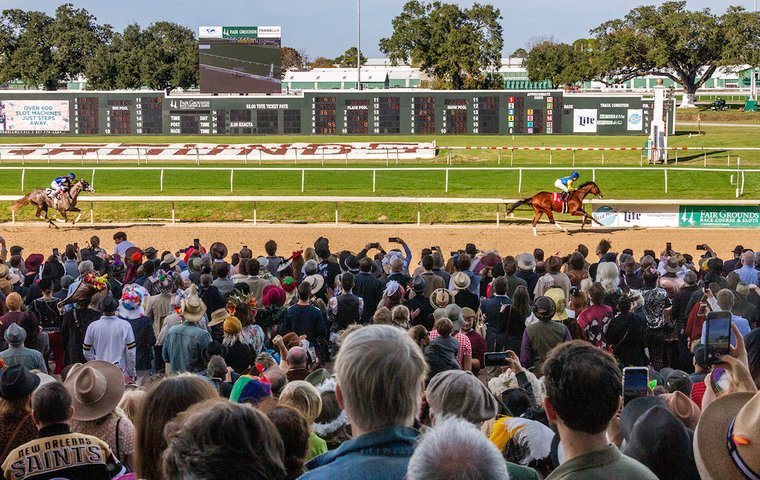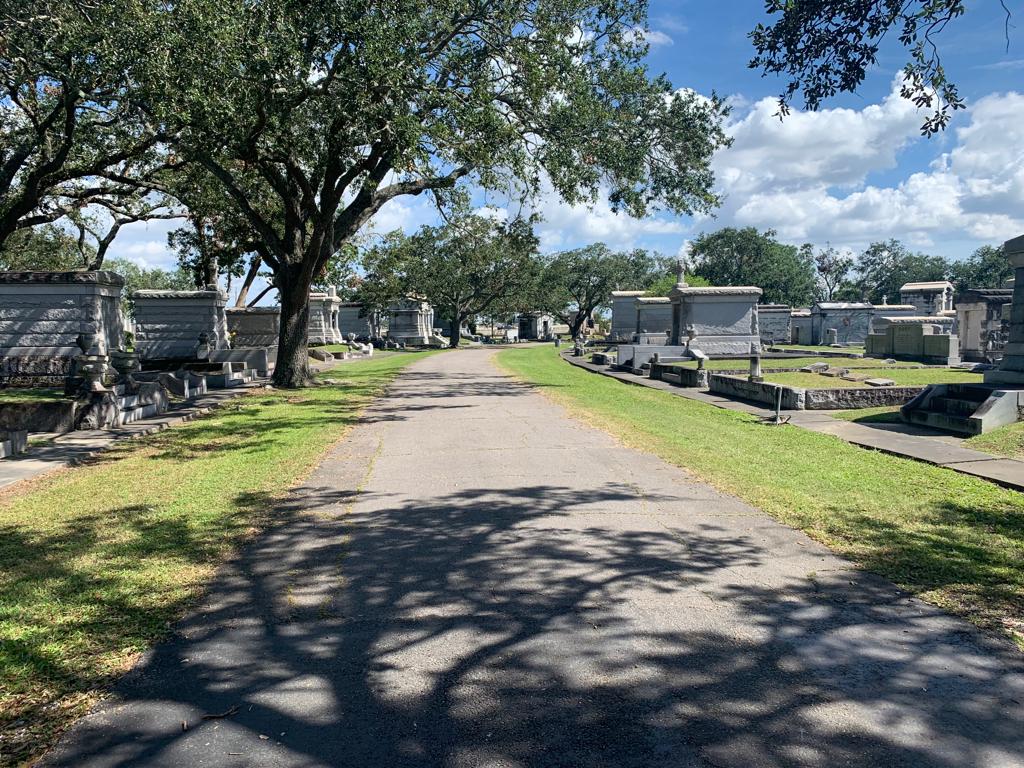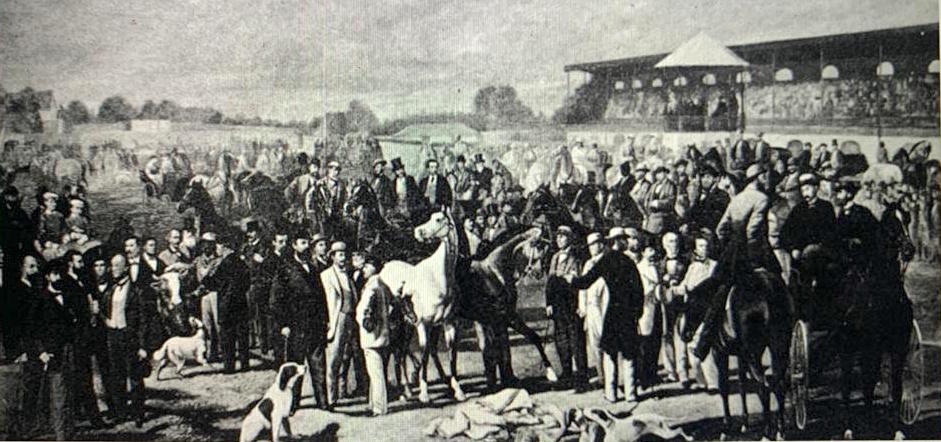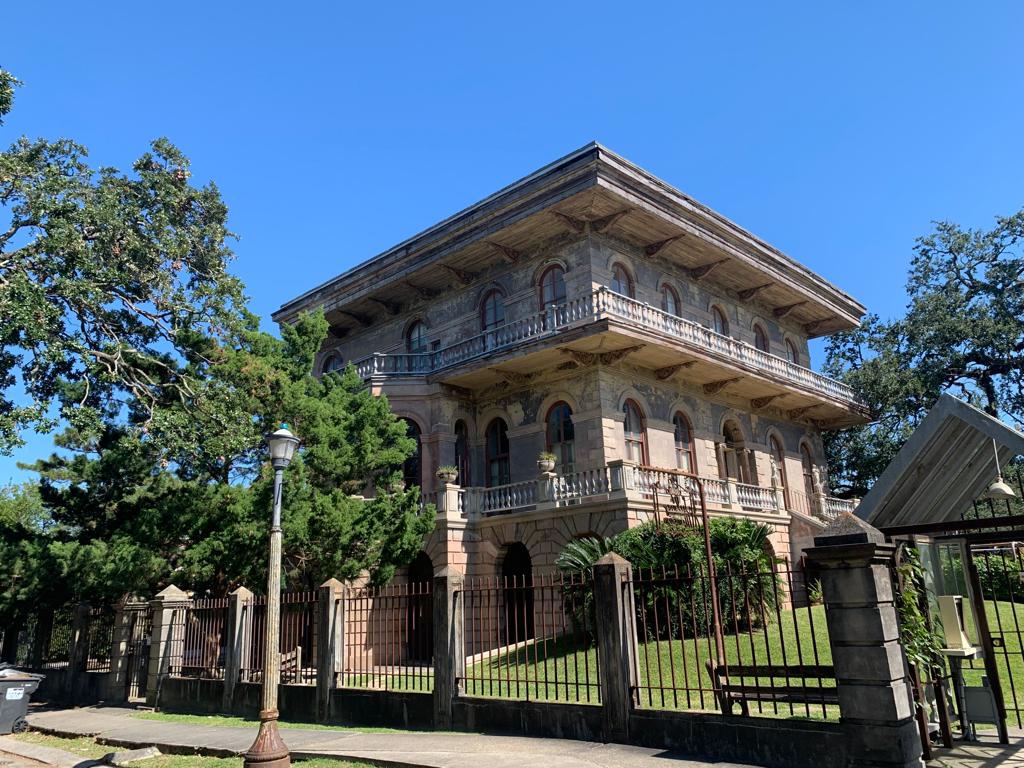
The sport had probably been taking place on small, informal half-mile circuits all around Louisiana, but it was the formation of the Metairie Jockey Club on the outskirts of New Orleans that really launched horseracing in the ‘Pelican State’ and specifically in the New Orleans area.
Metairie racecourse opened in 1838, a full 26 years before the first races would be run up at Saratoga, and the elites of New Orleans - the plantation owners and merchants - thronged there from the beginning. The grandstand was notably grand, with separate rooms and viewing areas provided for the ladies who dressed up and came to see and be seen.
Metairie Jockey Club was an exclusive one. A Mr Charles Howard, who had made his money by setting up a successful state lottery, was denied entry. Whether it was because of his lack of creole blood, or his nouveaux riche status, or perhaps just because he was a Republican, is unknown. He vowed he would one day buy that racecourse, close it down and build a cemetery on that track.

Metairie became renowned for its social scene, and the sport thrived there. It became famous nationwide as the track that hosted three famous contests between Louisiana’s and Kentucky’s best racers.
The racehorse Lexington was owned by Richard Ten Broeck, who had become a major stakeholder in Metairie racetrack and wanted to promote it by establishing a new sweepstake, the Great State Post Stakes. Although expected to be a meeting between North and South, Lexington, from Kentucky, was the northernmost based competitor that showed up.
Lecomte was by the same sire, Boston, as Lexington. Boston was a great racehorse of his day and a champion sire. His two best sons were the swiftest horses in the nation, and now the two unbeaten superstars were to meet.
Steamboats were chartered to New Orleans and ex-president Millard Fillmore was one of the judges in attendance.
Come the day, the track turned heavy and muddy, conditions Lexington reveled in but Lecomte did not, and Lexington duly won the first two of the four-mile heats, Lecomte tasting defeat for the first time.
A week later the pair were to meet again in the Jockey Club Stakes. This time Lecomte’s owner secured the services of Duncan Kenner’s slave rider, known as Abe.
Abe, the greatest rider in the south, was to take on the New York-born Gilpatrick, the greatest rider in the north. Under a perfect front-running ride from Abe, Lecomte gained his revenge over Lexington, the only horse ever to beat him.
The time of 7 minutes and 26 seconds broke the track record, set when the great northern mare Fashion bested the mighty Boston a generation before.

New Orleans celebrated southern hero Lecomte’s victory to the extent a remote town was named after him. They spelt his name wrong though and they say that is how Lecompte, Louisiana, came to be.
Honors were even, but it was never going to end there. Each camp believed their horse was the greatest.
Richard Ten Broeck took to the newspapers, seeking a rematch. Eventually he got it.
It was April 14, 1855, the day of the most widely anticipated rematch the sport had ever known. In the first heat, a knockout blow was delivered when Lexington won. The owners of a perhaps below-par Lecomte conceded defeat before the next heat.
The Daily Picayune described the match thus:
“The long agony is over - the contest is ended - the race is run! The rival champions Lexington and Lecomte, who commanded the Earth to stand still, who hushed the wind and rebuked the waves, have fought the battle.”
Impact of the Civil War
Lexington went on to become the greatest sire of his time, a 16-time champion. Lecomte’s record in the breeding shed was not as impressive, but he found success as a sire of broodmares and the relatively recent European champion fillies Sonic Lady and Attraction carried his blood.
The civil war took Metairie’s good fortunes and many great southern bloodlines with it when Union soldiers raided the plantations and plundered the horses.
Abe, the slave rider, escaped to the north and won the 1866 running of the Travers at Saratoga as Abe Hawkins, then a free man.
Metairie racecourse never really recovered and was closed. The newly built Fair Grounds racecourse, just a couple of miles away in Bayou St John, took over. Charles Howard did buy that racecourse and was later interred there himself.
There were other tracks in New Orleans that came and went. The first was the Eclipse, opened in 1837. City Park had a racetrack, and there was Jefferson Downs, but Metairie ruled it all and Fair Grounds flies the flag now.
Built in 1865, the Luling Mansion sat on 80 acres, which ran right up to Bayou St John. It was commissioned by a successful German merchant, Florenz Luling, as his family home. Not long after moving in, though, his business began to fail, and then his two sons drowned in that bayou. The designer of the mansion, famed architect James Gallier, later drowned also, when a ship he was sailing in sunk.

The German merchant sold the mansion and returned to Europe with what was left of his family. Perhaps Luling shouldn’t have purchased land that ran right up to the bayou, as that was where the ‘Voodoo Queen’, Marie Laveau (1801-1881), liked to hold large celebrations after sundown each St John’s Eve.
The Louisiana jockey Club ran the Fair Grounds track and purchased the opulent Italianite Luling Mansion right behind the racecourse as the clubhouse. It became known for the glamorous dinners and cocktail parties held there.
Fair Grounds opened its doors in 1872, but horses had raced on the same spot sporadically since Metairie’s first days, making it seemingly the oldest Thoroughbred racecourse in the USA to still be operating, albeit not continuously. In 1839, there was a first brief meeting at the ‘Louisiana Racetrack’. Then, in 1852, it opened again, this time as the Union Racetrack, but it fell to competition from Metairie before reopening once more in 1872, this time as Fair Grounds.
Opening day now is traditionally on Thanksgiving, and the locals dress up as for Mardi Gras and flock to the track, providing a wild, colorful spectacle unique in the racing world.
Now horses are back at Fair Grounds for this year’s meet, hundreds and hundreds of them, their bloodlines noted and recorded for centuries. Next year’s Kentucky Derby winner could be among them.
Two winners of the Louisiana Derby have gone on to take The Roses, Grindstone in 1996 and Black Gold in 1924.
Black Gold ran his last race at the Fair Grounds. He broke his ankle in the stretch and was buried in the infield. A monument stands to him there.
The French impressionist Edgar Degas visited New Orleans in the autumn of 1872 for five months. His mother’s family had a grand home on a stone’s throw from the newly opened Fair Grounds racecourse and the Luling Mansion, and he regularly attended both during his stay.
Although best known for his paintings of ballerinas, racehorses were another favorite subject. Someone asked him once why he returned to them so often, why he revisited those same poses again and again?
“A horse without a rider is still a horse,” he replied. “But a man without a horse is just a man.”


